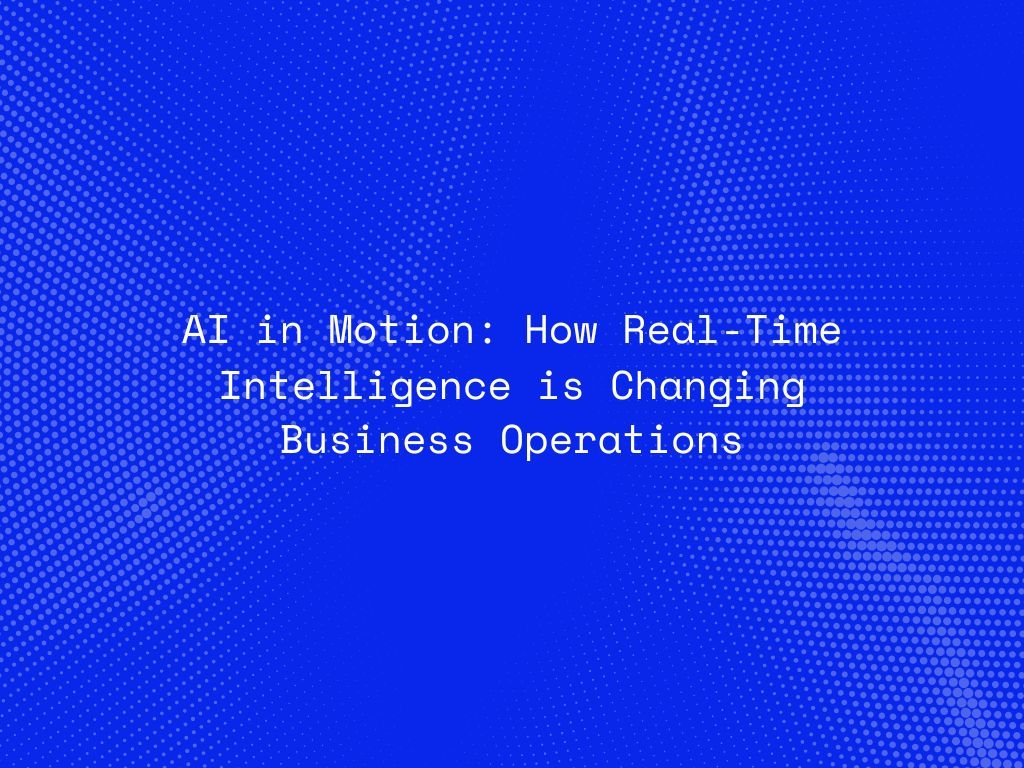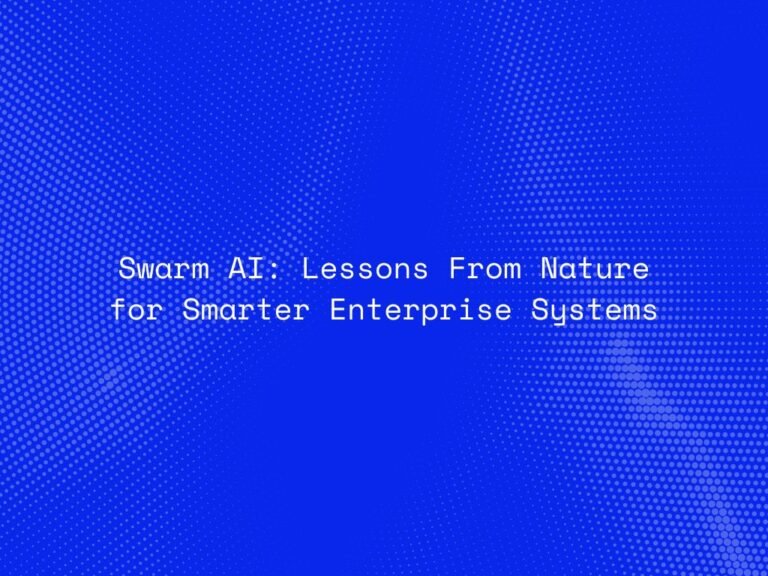The age of static data analysis is giving way to a new paradigm—real-time intelligence powered by Artificial Intelligence (AI). As businesses operate in increasingly fast-paced, dynamic environments, the ability to respond to events as they happen has become a major competitive advantage. This is where real-time AI comes into play.
From fraud detection in finance to supply chain optimization in manufacturing, AI systems are now capable of ingesting, analyzing, and acting on data within milliseconds. This shift from retrospective reporting to real-time responsiveness is fundamentally transforming how organizations operate, make decisions, and deliver value to their customers.
In this blog, we explore the growing influence of real-time AI, its core technologies, and how it is reshaping business operations across sectors.
What is Real-Time AI?
Real-time AI refers to the use of machine learning and data processing systems that can analyze and respond to data as it is generated—instantly or within a very short time window. These systems are designed to:
-
Ingest live data streams (from sensors, transactions, or users)
-
Apply AI/ML models on the fly
-
Trigger actions or insights in real time
Unlike traditional analytics that work on stored, historical data, real-time AI empowers organizations to act immediately based on current conditions—reducing delays, improving agility, and enhancing outcomes.
Key Technologies Powering Real-Time AI
-
Stream Processing Engines
Tools like Apache Kafka, Apache Flink, and Spark Streaming process large volumes of data in motion, enabling scalable and low-latency data handling. -
Edge Computing
By deploying AI at the edge—closer to the source of data like IoT devices or cameras—businesses reduce latency and improve response times. -
Machine Learning Inference at Speed
Optimized AI models and frameworks like TensorFlow Lite, ONNX Runtime, and NVIDIA TensorRT allow ultra-fast inference for immediate decision-making. -
Event-Driven Architecture
Systems designed around triggers and events facilitate seamless responses to user actions, system changes, or external signals in real time.
How Real-Time AI is Reshaping Business Operations
1. Enhancing Customer Experiences
In sectors like e-commerce and media, real-time AI personalizes interactions as users browse or engage with content. Recommendation engines, dynamic pricing models, and chatbots powered by NLP respond instantly to user behavior, increasing engagement and conversion rates.
2. Optimizing Supply Chains
Real-time AI can track shipments, monitor inventory, and predict disruptions. By analyzing live data from logistics systems and environmental sensors, businesses can reroute deliveries, avoid bottlenecks, and adapt to changing demand in real time.
3. Strengthening Cybersecurity and Fraud Detection
Banks and online platforms use AI to detect anomalies or suspicious behavior as it happens—flagging fraudulent transactions, login attempts, or data breaches in milliseconds. This proactive approach drastically reduces risk and damage.
4. Enabling Predictive Maintenance
In manufacturing and aviation, AI processes sensor data in real time to anticipate equipment failures before they occur. This minimizes downtime, extends machine life, and reduces operational costs.
5. Supporting Real-Time Decision Making
Executives and frontline workers benefit from AI-powered dashboards and alerts that present the latest insights. Whether it’s financial forecasting or monitoring market sentiment, decisions are made based on the most current information.
Benefits of Real-Time AI for Businesses
-
Increased Agility: Faster decision-making enables quicker responses to customer needs and market shifts.
-
Improved Efficiency: Automation reduces manual intervention and operational friction.
-
Better Risk Management: Proactive monitoring and instant alerts help mitigate threats early.
-
Higher Customer Satisfaction: Personalized, timely experiences lead to stronger relationships and loyalty.
-
Competitive Advantage: Businesses that adopt real-time AI stay ahead in fast-moving environments.
Industries Leading the Way
-
Finance: Real-time fraud detection, algorithmic trading, and credit scoring.
-
Retail: Dynamic pricing, inventory tracking, and behavioral analytics.
-
Healthcare: AI-assisted diagnosis, emergency alerts, and patient monitoring.
-
Manufacturing: Smart factories with real-time quality control and robotics.
-
Transportation: Fleet management, traffic optimization, and autonomous vehicles.
Challenges and Considerations
While the benefits are substantial, implementing real-time AI also requires addressing:
-
Data quality and integration: Real-time AI systems rely on accurate and consistent data from diverse sources.
-
Latency and infrastructure: High-performance computing and low-latency networks are critical for responsiveness.
-
Scalability: Systems must be designed to handle large volumes of data under varying loads.
-
Security and compliance: Sensitive real-time data must be protected and handled in line with regulations.
Conclusion
AI is no longer just a tool for post-event analysis—it’s a real-time intelligence engine that is actively shaping how businesses operate. By embedding real-time AI into operations, companies gain the ability to predict, respond, and adapt instantly, unlocking new levels of efficiency, resilience, and innovation.
As the demand for responsiveness and personalization continues to grow, organizations that embrace real-time AI will be best positioned to lead in the digital era—where every second counts.




